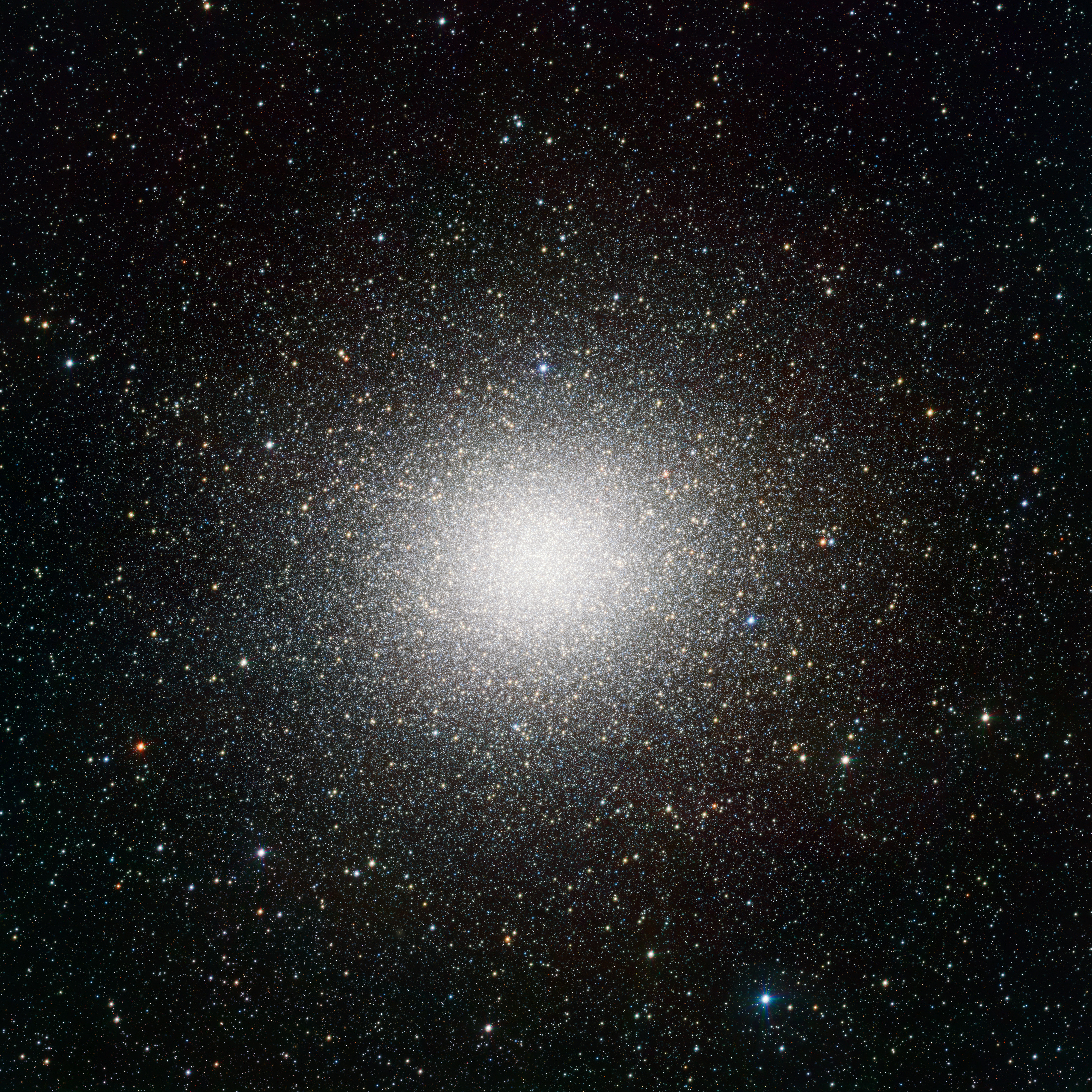Ω Centauri
Omega Centauri (ω Cen, NGC5139) is the brightest, most massive globular cluster in the Milky Way and it has complex stellar populations. More specifically it shows multiple sequences in its color-magnitude diagram, large spread in metallicity and possibly also ages. Due to this, it has long be suspected to be a stripped of nuclei of a dwarf galaxy that has merged with the Milky Way a long time ago.
Image Credit: ESO/INAF-VST/OmegaCAM. Acknowledgement: A. Grado, L. Limatola/INAF-Capodimonte Observatory


